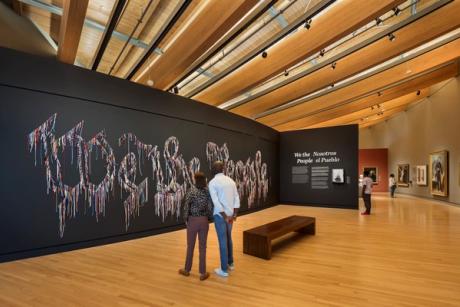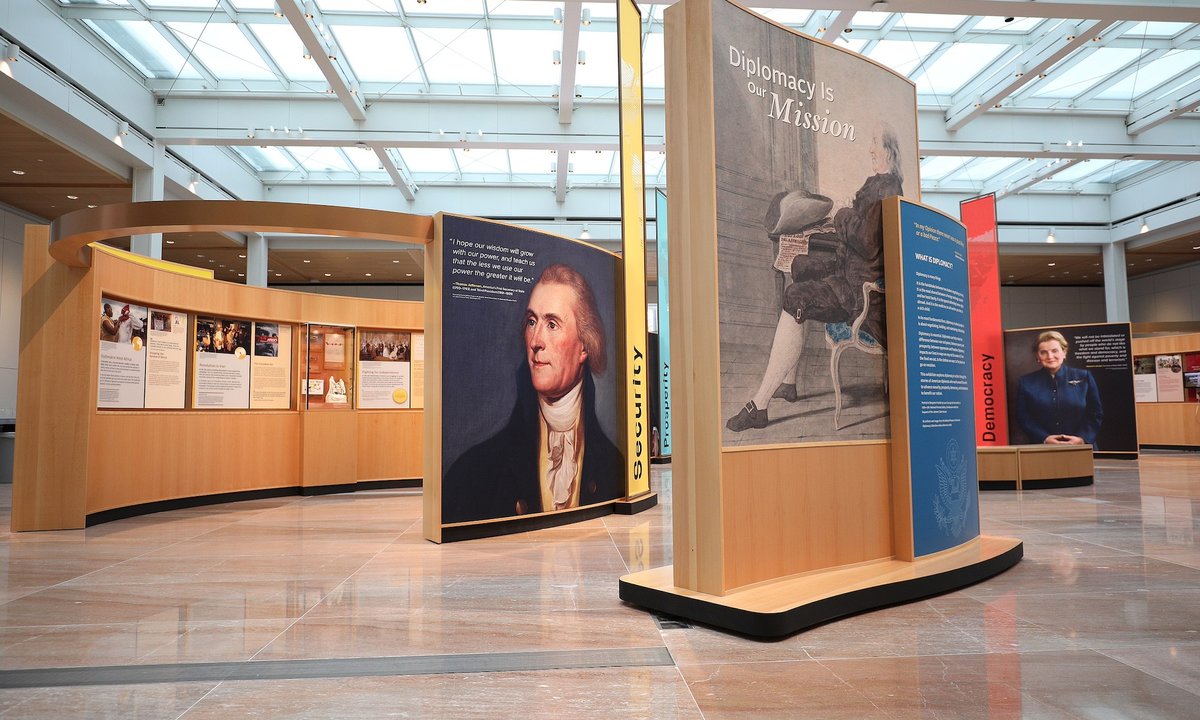
In the wake of a global pandemic and concurrent worldwide reckoning with institutional racism, two illuminating studies on the state of cultural heritage at large have just been released. The Mellon Foundation’s latest “Art Museum Staff Demographic Survey” and the Black Trustee Alliance for Art Museums’ “2022 Art Museum Trustee Survey” both itemise and quantify the experiences of art museum workers and board members, painting a picture of a sector slowly bouncing back from significant Covid-19 job losses with a renewed focus on diversity.
The Mellon Foundation’s survey, conducted in partnership with the American Alliance of Museums and the Association of Art Museum Directors, gathers data from over 30,000 individual staffers at 328 participating museums, comparing the latest numbers with those gleaned from the survey’s previous iteration in 2018.
The Black Trustee Alliance for Art Museums’ survey, the first of its kind to centre Black trustees in such comprehensive terms, explores testimony from more than 900 respondents. Taken in tandem, the studies begin to sketch a narrative: despite industry-wide concerns that extensive layoffs brought on by the pandemic would undermine sustained DEAI (diversity, equity and inclusion) initiatives, cultural heritage institutions are continuing to emphasise inclusivity in their hiring practices and programming.
“Though progress remains slow and uneven, the demographics of museum employees across the country are becoming more reflective,” Mellon Foundation president Elizabeth Alexander says in a statement. “We are pleased that the information and insights included in this latest survey will further equip and encourage American museums to build even more representative and robust arts and culture institutions throughout the United States.”
Gender ratios stabilising
One of the most constant figures in the cultural field is the workforce’s breakdown along gender lines. Art museums have historically been staffed predominantly by women (who comprise 60% of museum staff) and helmed by men. Gender ratios have remained fairly stagnant since 2015, with female employees still comprising 75% of intellectual leadership positions. While men still outpace women in directorial roles, the representation of women has increased in that arena, rising from 58% in 2015 to 66% in 2022.
Slowly diversifying
While diversity has increased across the field overall, so far only 20% of the workforce at US museums is non-white. Still, the Mellon Foundation’s survey found that 40% of new hires and staff members under 35 are people of colour. The largest demographic increases have been in Latinx, Asian and multiracial populations; the number of Black staff has not increased in the aggregate, but Black representation in museum leadership has tripled since 2018. Employees of colour are more frequently relegated to “public-facing” roles; 20% of museum leadership and conservation staff are people of colour compared to the 47% of building and operations staff, for instance.
Directors prioritise DEAI
In their responses to the Mellon survey, museum directors reported that DEAI is now a central consideration at twice the rate they did in 2020. Directors at institutions with above-average staff diversity emphasised the importance of DEAI at a slightly higher percentage than those leading museums with below-average staff diversity.
Retention rates are still a problem
While museum directors have identified diversity, inclusion, and pay equity as priorities, the museum roles with the most diverse populations at museums are consistently those with the lowest retention rates, especially since most “public-facing” museum roles are lower-paid, part-time and paid on an hourly (rather than salaried) basis.
A new generation of trustees
The Black Trustee Alliance for Art Museums survey shines a light on the backgrounds and experiences of Black trustees in North American art institutions. Black trustees tend to be younger, more educated and less likely to benefit from intergenerational wealth than white board members. They are less likely to have family on art museum boards than their white counterparts, but a third have family members on other non-profit boards. Black art museum trustees, while they mostly report positive experiences in the boardroom, are more likely to report a “negative climate”.
These findings led the alliance to suggest “evidence-based strategies” for cultivating and enacting DEAI values in a boardroom context. Museums, the group emphasises, should consider imposing term limits to help boards avoid intellectual and experiential stagnation. They should seek to increase Black representation on committees in which Black voices have been historically sidelined, like investment, leadership searches, and acquisitions. Recruiting efforts should shift away from an entirely network-based model to include pipeline programmes, search firms and recommendations from community leaders.
The alliance also stresses in its report that DEAI implementation should not fall exclusively to the purview of Black trustees. Diversity in the museum sphere is a shared responsibility, the report notes, and Black voices should be centered in conversations that don’t rely on their tokenisation.
Taken together, the surveys reflect the reality that appreciable change in the museum sector is slow and can often skew toward the symbolic. Proof of meaningful institutional improvement on the DEAI front, the surveys conclude, will manifest in the form of amended pay policies, increased access to benefits and more concerted efforts to evade turnover for “public-facing” roles. Listening to the material and institutional needs of Black and non-white staffers and board members will increase buy-in and lead to actionable shifts within the field.







